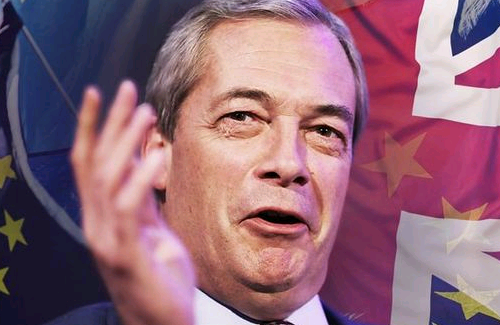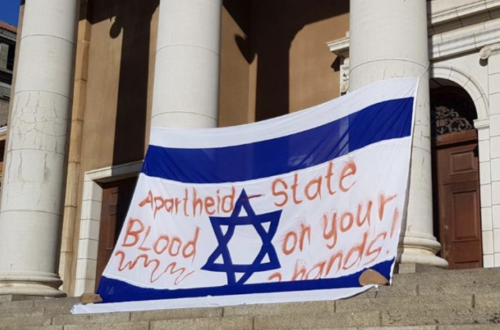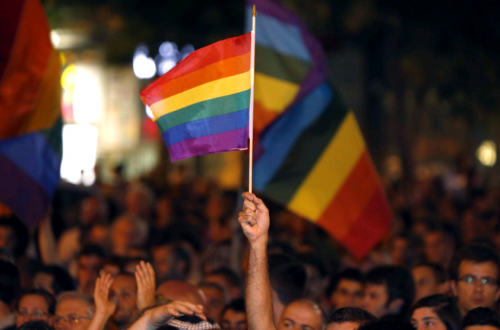Cross-post by Noah Phillips
The famed blonde-haired girl, a symbolic youthful leader of the Palestinian resistance, 16-year-old Ahed Tamimi, a West Bank resident, has been indicted on charges of assault following a viral video that surfaced of her yelling, kicking, and slapping two Israeli soldiers. The film presented the two soldiers remaining stoically still as they berated and shouted at by Ahed and a family member, yet the soldiers continuously refused engagement in any violent conflict. Reportedly, the Israelis stood on the front yard of the Tamimi property as Ahed–quite forcefully–attempted to remove them, which she asserts served as a justification for her violence.
And the Tamimi clan are certainly no strangers to violence with Israeli soldiers, noted by the IDF (Israeli Defense Forces) among others as inciters of terrorism and violence against the state of Israel, so Ahed’s unprovoked actions on the video are not remotely surprising, nor unlike the Tamimis. The aunt of Ahed, Ahlam Tamimi, remains domiciled in Jordan following her orchestration of a fatal bombing at a Sbarro pizza restaurant in Jerusalem nearly two decades ago, an act for which she remains on the FBI’s Most Wanted List. Ahed and family are shown on video embracing Ahlam at her wedding in Jordan–married to a known murderer of an Israeli Jew, I might add–evidencing their close relationship and likely, resembling political ideology. The Tamimis are allegedly a part of the “Pallywood” phenomenon, filming Israeli soldiers in the worst possible light as propaganda to advance the pro-Palestinian lobby. On various occasions, the Tamimi family reached fame–or infamy–for their allegedly staged confrontation with Israeli soldiers, attempting to provoke a violent reaction from them.
In a spurious article published in Al Jazeera and the Huffington Post and circulated through various news outlets, the author, Shenila Khoja-Moolji, attempts to draw a parallel between Ahed and Malala Yousafzai, the renowned 20-year-old Pakistani advocate for women’s education under Taliban rule and a recent Nobel laureate. Moolji contends, “Ahed, like Malala, has a substantial history of standing up against injustices,” her reasoning as to why the global community must embrace them both in equal ways; meaning awarding Ahed a Nobel prize, international sympathy, and a profitable book deal.
The question raised is: Should Ahed Tamimi receive the same media coverage and global esteem as Malala?
Firstly, any claim that the media has discriminated in providing minimal press coverage of Ahed’s indictment is a bold fallacy. For years, Ahed has been a “star” of numerous viral videos of her frequent confrontations with Israelis, earning praise from both Palestinian Authority President Mahmoud Abbas and the Turkish President Recep Tayyip Erdoğan, both of whom she was invited to meet. In her home village of Nabi Salih and throughout the West Bank, Ahed has become a quasi-celebrity as the powerful, youthful face in the Palestinian movement. A heavy ad campaign in recent weeks in London saw posters throughout the city adorning the slogan “FREE AHED TAMIMI.” A group of 40 protesters gathered in Union Square, New York City to demand the release of Ahed from Israeli authorities. Social media campaigns and petitions were rampant on the Internet in support of the release of Ahed. All this to show, the world has taken notice and action on behalf of Ahed.
Yet the exposure that Ahed has received and the global support for her actions are what is most troubling.
Ahed and Malala differ significantly in their forms of activism and opposition, and while both are fervently committed to their respective causes, the two young activists pursue change utilizing distinctive approaches.
Malala fought against Taliban subjugation of women with her powerful speeches, her messages, and above all: peaceful advocacy. She began her arduous and ongoing effort through her writings as a BBC blogger, detailing her situation to the world before garnering global sympathy and exposure. In her speech at the United Nations General Assembly on her 16th birthday, Malala emphasized her commitment to effecting lasting change in the human rights of women in Pakistan without promoting violence as a means to achieve change. “This is what my soul is telling me, be peaceful and love everyone,” she said in the speech. Malala called upon the world leaders to amend their policies “in favour of peace.” Only a teenager at the time, Malala had the remarkable foresight to see that improvements to a standard of living, even in the opposition of terrorists and in a nation with such traditional gender roles as Pakistan, are realistic outcomes not necessitating any forms of violence to achieve.
And in her protests against the Taliban, campaigning for access to women’s education in Pakistan, Malala adhered to a peaceful code of conduct:
“If you hit a Talib … then there would be no difference between you and the Talib. You must not treat another with that much cruelty and that much harshly. You must fight others, but through peace and through dialogue and through education. Then I’ll tell him how important education is and that I even want education for your children as well. And I’ll tell him, ‘That’s what I want to tell you. Now do what you want.’”
The enduring commitment of Malala to her cause of women’s education is what makes her an activist, coupled with her lack of hatred and animosity, her peacefulness and compassion, makes her outstanding.
Starkly contrasting the employed style of peaceful advocacy by Malala, Ahed has gained notoriety among right-wing Israelis and fame among liberal and pro-Palestinian circles for her aggressive opposition to Israeli soldiers near Nabi Salih. At 13, she, in one of many incidents, approached an Israeli soldier and proceeded to shout and menace. She held her fists high and shoved him, and as he walked away from the conflict, Ahed can be seen following and blocking him, still berating and assaulting him despite his evident attempt to de-escalate. Ahed is establishing a dangerous norm for Palestinian resistance, now apparently accepted by the international community: advocacy through violence.
However the two share one apparent similarity, not in their advocacy per se, but in their shared adversity. Malala was shot in the head in 2012 by the Tehrik-i-Taliban (the Pakistani faction of the Taliban) as a result of her outspokenness on female education, yet carried on in her advocacy, still perpetuating her pacifist philosophy. On the verge of death, Malala maintained her kindness towards others, including her detractors. Ahed has faced hardships as well, with continued violence and faltering socio-economic conditions inside the West Bank. On a personal level, Ahed’s 14 year-old cousin was shot recently with a rubber bullet and rushed into surgery during a protest in Nabi Salih. But unlike Malala, Ahed’s challenges and misfortunes appear to have spurred her actions of violence, extending the sequence of conflict.
It is tempting by media and political organizations to seize upon youthful activists as poster children for change. To some extent, the images of Ahed Tamimi in the West Bank and Malala Yousafzai in Pakistan are both compelling to general audiences as they represent young women seeking to change power structures and status quo. Yet it’s a mistake to consider Ahed and Malala similarly, as their methodologies of advocating their respective causes contrast widely. Ultimately, Ahed’s deliberate provocation of violence and her inciting conflict truly undermines the legitimacy of her cause.


